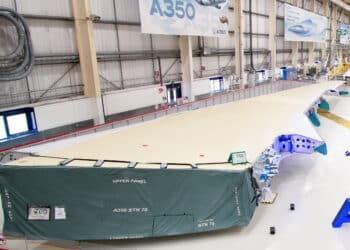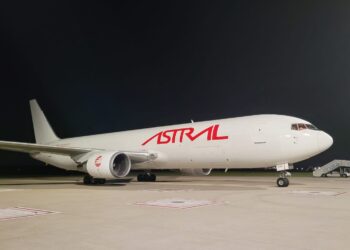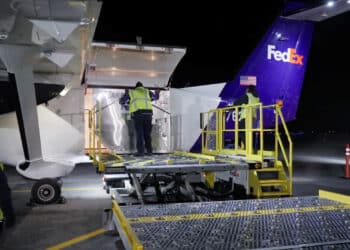Nevada test puts Hyperloop One’s tech one step closer to deployment (updated)
Hyperloop One’s test vehicle clocked 310 kilometers per hour on a 500-meter track in the Nevada desert, successfully completing “phase two” of the high-speed rail transportation project that the company says could, “be anywhere, move everything and connect everyone.”
Lofty goals, indeed. But, hyperbole aside, during yesterday’s test, the company’s XP-1 transportation pod accelerated for 300 meters and then coasted above the track using magnetic levitation, before braking and coming to a stop. Hyperloop One says that all systems tested successfully.
The next step in the evolution of this new transportation mode will be proving its mettle on longer distances, if hyperloop systems have hopes of meeting or surpassing jet-speed connectivity. However, there remain three basic impediments to commercial hyperloop-transit: technology, financing and safety.

Hyperloop One CEO Rob Lloyd said that, with yesterday’s success, the company had proven that its technology works. Lloyd said that opened to door to “discussions with partners, customers and governments around the world about the full commercialization of our hyperloop technology.” Following the publication of this article, a representative from Hyperloop One contacted Air Cargo World to say that “The first Hyperloop systems will be operational by 2021.”
The latest testing round in the Nevada desert achieved record speeds in a tube depressurized down to the equivalent of air at 200,000 feet above sea level. During the test, the company said that technological components of the system were successfully tested, including the “highly efficient” electric motor; advanced controls and power electronics; custom magnetic levitation and guidance systems; pod suspension; and vacuum system.
Regarding financing, detractors have focused on the prohibitive costs of hyperloop infrastructure. Leaked documents obtained by Forbes showed that, by Hyperloop One’s own estimates, the cost of a potential 107-mile route in the San Francisco Bay Area would run between US$9 billion and $13 billion – that’s between $84 million and $121 million per mile.
With costs like those, potential investors will be following the tests in Nevada closely.
On the safety side, the threat of a rupture in the tube while a vehicle is traveling at jet-speed could deter some travelers, but on the logistics side, hyperloop represents unparalleled speed and connectivity. Once scaled up to a certain level, hyperloop transportation could even enter into competition with air freight, especially on high-traffic overland routes such as Miami – New York.
Lloyd’s positive outlook is certainly substantiated by the success of phase two, but maintaining a 500-meter of track in a secured testing facility is much easier than securing and maintaining thousands of inter-city low-pressure tubing. That may be why another hyperloop-innovator, Elon Musk, tweeted last month that his Boring Company tunnel project had received “verbal [government] approval” to build a hyperloop that would connect the cities of New York City, Philadelphia, Baltimore and Washington, D.C.
The video below shows Hyperloop One’s XP-1 test vehicle running through its paces in the test loop:
https://www.youtube.com/watch?v=uLh1alyhc1E
To learn more about the impact of e-commerce on supply chains, air freight and logistics, join us at Air Cargo World’s ELEVATE Conference in Miami, Oct. 2. Click here for registration information.





